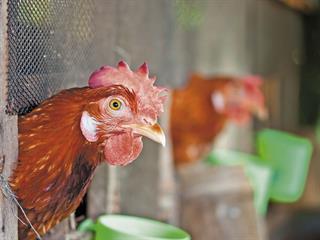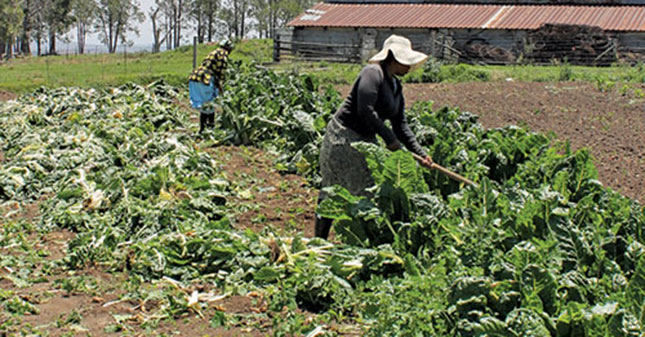
How do South Africa’s poultry producers measure up when it comes to the welfare of chickens?
We think that South Africa’s poultry industry is doing well in terms of meeting welfare requirements. Disregard for the South African Poultry Association’s (SAPA) code of good practice is the exception, rather than the norm. There are many misconceptions about farmers and their willingness to adhere to welfare recommendations.
Most farmers want their birds to be healthy so that they can produce and generate profit. Farming is a business and it’s therefore not in the interest of producers to keep their chickens in poor conditions.
What is the industry’s most pressing welfare issue?
In the egg industry, the size of layer cages is under review. Welfare organisations, international trends, and consumers want cages to be bigger so that hens can have better access to food and water, and so that they can move around with greater ease.
According to SAPA’s code of practice for pullet rearing and table egg production, space requirements for commercial layers increase as the birds approach maturity. Up to six weeks, commercial layers in cage systems require 150cm2 (122mm by 122mm) each, and hens between 17 to 18 weeks need 300cm2 (173mm by 173mm) per bird.
After 18 weeks, the space requirement increases to 450cm2 (212mm by 212mm) per bird. Cage height permits standing and free head movement. In free range systems and barn egg production, 10 adult birds/m2 (100cm by 100cm) is advised.
Cages were initially introduced for welfare purposes.
As free-roaming chickens are more susceptible to diseases, salmonella and intestinal parasites, farmers wanted to move chickens from the ground, where they scratch around, to cages in order to reduce these incidences.
Why has the egg industry had to deal with growing opposition to caged housing, over the years?
The cages are perceived as too small and although the initial goal was to keep birds healthy, producers realised they could make more money if they were to house more hens per square metre.
While we at SAPA agree that chickens should not be crammed into spaces that are too small, a balance between welfare concerns and economic sense should be achieved.
Do you believe that chickens in cages suffer?
There are opposing views on whether chickens in cages suffer. Free range poultry farmers, for example, strongly advocate that caged housing is cruel. However, it is difficult to say with certainty that layers in cages suffer. What is certain is that unhappy birds are not productive. Thus, if they were unhappy, they would not be producing.
What would the financial implications be if all poultry farmers converted to more spacious housing?
Converting to more spacious housing will result in higher production costs for farmers. It must be kept in mind that the egg price will increase if the number of chickens per square metre decreases. We cannot have a situation where people cannot afford eggs.
Currently, the biggest challenge is to convert chicken housing to bigger cages, and this can’t be done overnight. A phased approach is going to be the most practical and economical. This means that farmers would have to convert new housing facilities to comply with the revised code of conduct that SAPA is currently compiling.
This will require extensive capital outlays, and many farmers might not be financially able to do this.
Are small-scale producers able to adhere to welfare codes?
Small-scale farmers find it difficult because compliance is expensive. The reality of our small-scale poultry industry is that farmers simply don’t have the resources, and the cost of compliance is too high. Some farmers are also not aware of
all regulations.
This sector’s lack of knowledge about chicken production is also a big challenge. This can unintentionally result in poor welfare. In broiler production, overcrowding might be an issue if farmers do not know how many birds to keep per square metre.
Drinkers may have leaky nipples because of poor maintenance, and this could wet the litter. However, farmers may only realise this when chickens present with burnt feet, which would be considered poor chicken welfare.
Does government help small-scale farmers to achieve better welfare standards?
Government doesn’t assist farmers in achieving welfare standards. SAPA’s code of good practice guides producers, but we don’t enforce it. While DAFF looks for ways to monitor welfare, we find that welfare organisations have been filling in the gaps.
How can industry address poor maintenance that may lead to poor chicken welfare?
Maintenance is often neglected if a farmer is under financial stress. For instance, instead of replacing a piece of equipment every few weeks as required, financially stressed farmers may stretch the lifespan of the item to save money, and this is understandable.
All we can ask is that farmers remain vigilant. One cannot be an absent farmer, despite the size of one’s operation. Farmers should inspect their chicken houses often, and should be aware of what is happening on their farms.
The handling and transport of chickens often attract attention and can negatively affect the industry’s reputation. How should farmers manage this?
These are problems in our industry. However, it’s the farmer’s responsibility to provide information and regular training to employees who handle birds, to reinforce good practice. It’s also the farmer’s responsibility to ensure that all birds leaving
the farm are correctly transported.
Farmers may find themselves in trouble if they allow buyers to transport birds from their farms using unsuitable transport as this is a breach of good welfare. Producers have been tackling this problem, however, and some farmers have become so strict that they don’t sell to buyers who come to their farms in open bakkies.
How can the industry find a balance between welfare, economics and consumer demands?
What consumers must keep in mind is that demands cannot be outrageous. If everything that consumers demand had to be put into practice, many farmers would go out of business and many new entrants to the industry would never make it. All the new welfare requirements that farmers have to meet are going to cost money, so just think how this will impact a small-scale farmer.
South Africa’s farmers are good at what they do, and technically they are exceptional in comparison with many other countries. Our farmers constantly have to improve what they do to remain competitive, and meeting welfare requirements is very much part of the business.
Call SAPA on 011 795 9920 or visit www.sapoultry.co.za.












